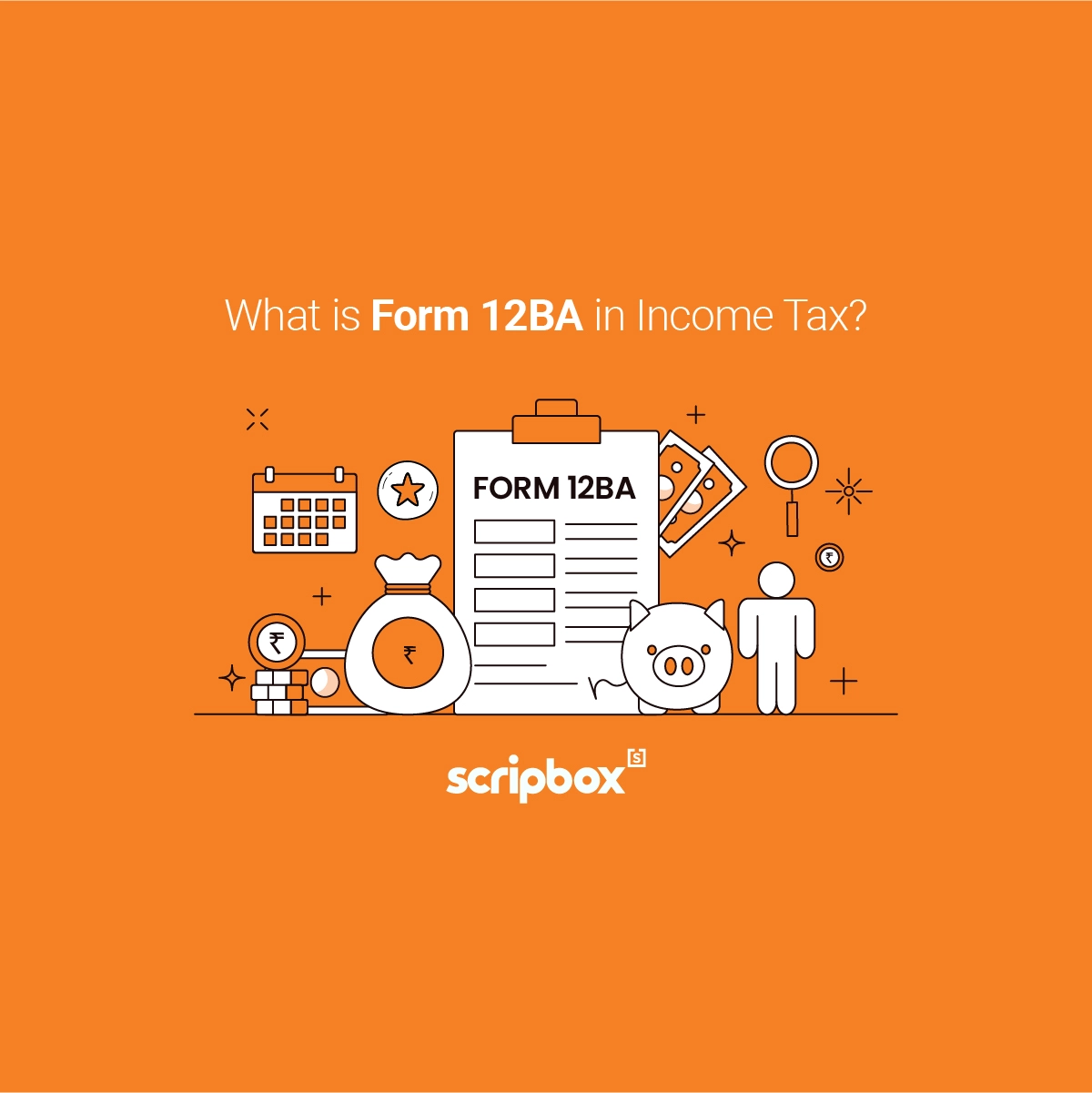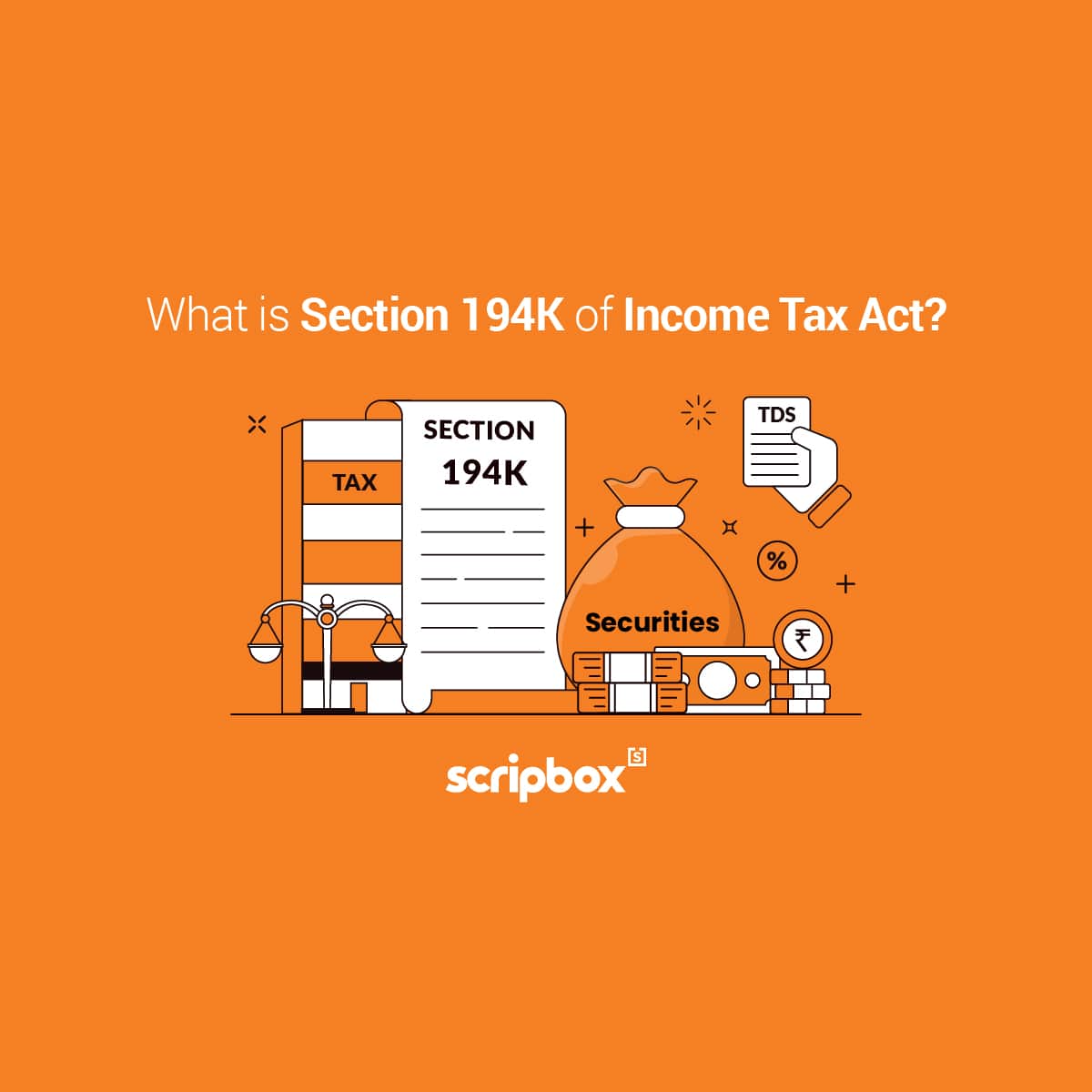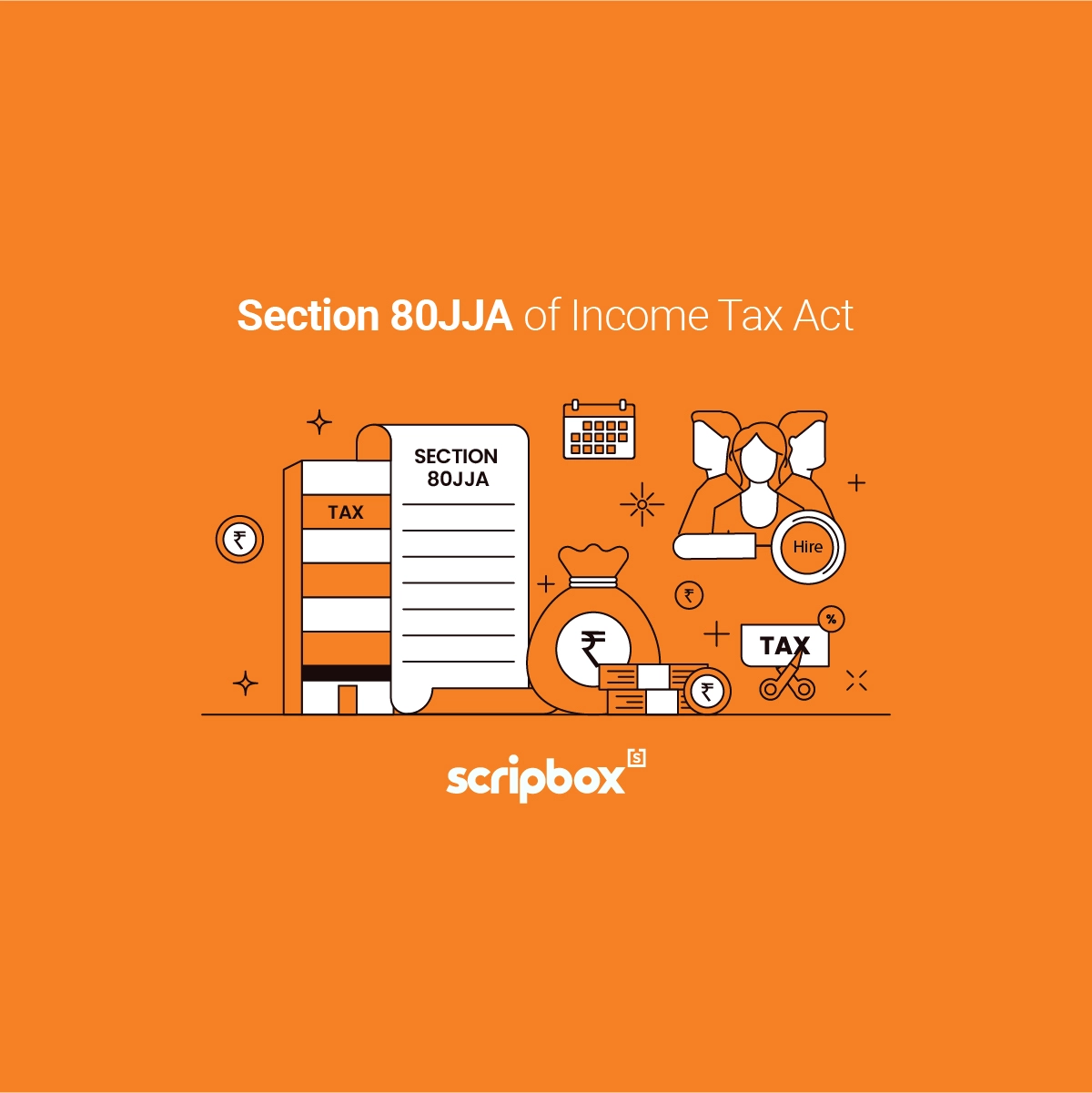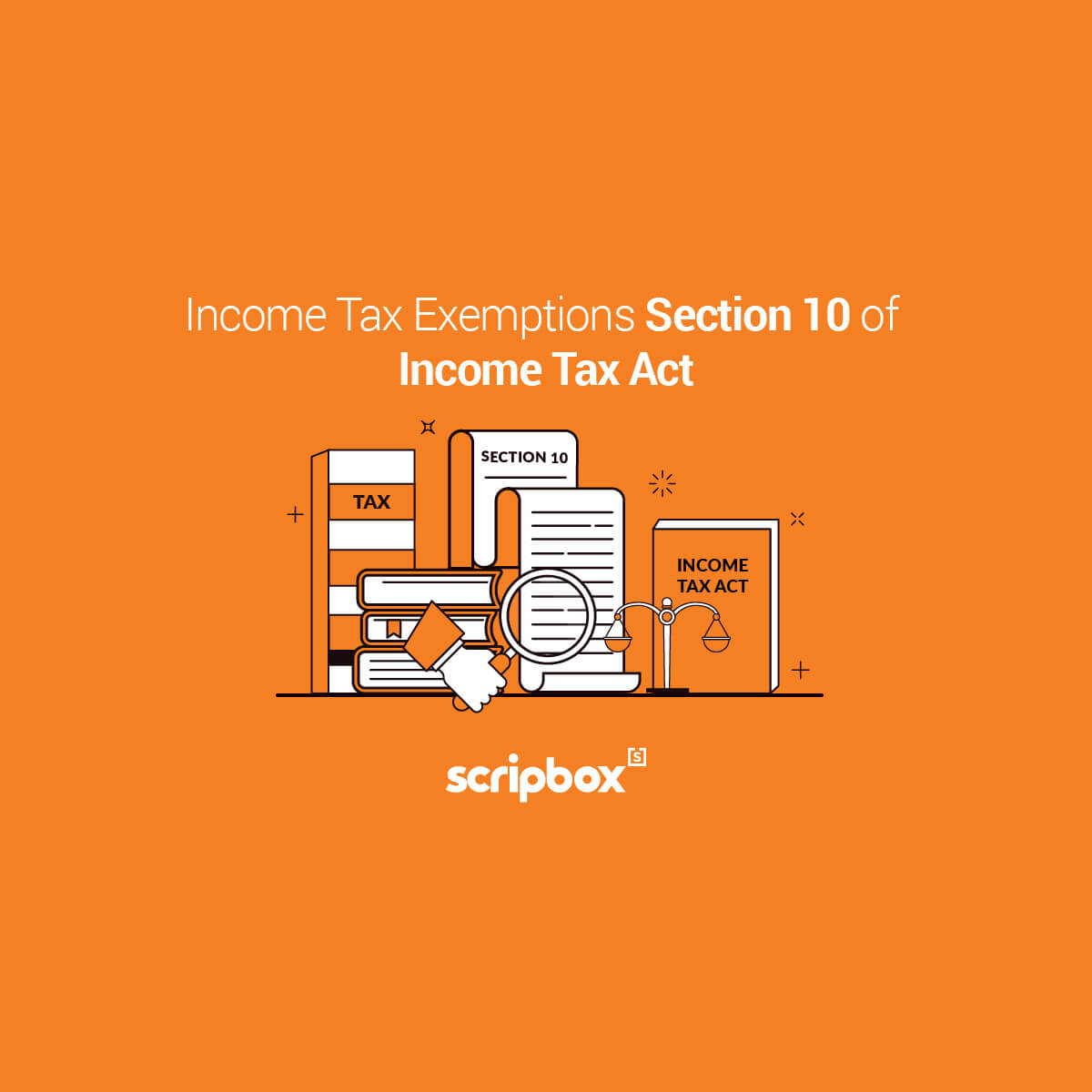What is Section 80C of Income Tax Act?
Section 80C of the Income Tax Act provides tax deduction up to Rs1.5 lakhs to individuals and HUF. The tax deductions provide a means for individuals to reduce their gross total income and save tax. They, therefore, lead to lower outgo of money for taxes. In this article, all the deduction under 80C and its subsections are explained in detail.
Under Section 80C, a taxpayer can claim an exemption for the investments made and expenses incurred up to Rs 1.5 lakh in a financial year. The investments and expenses in the financial year qualify for a deduction claim.
For example – To claim tax deduction under old regime in AY 2022-2023, the deduction and expenses must be made between April 2021 and March’2022.
Deduction under 80C is applicable only to individual taxpayers and HUF. This deduction is not applicable to a partnership firm, LLP, and company.
Type of Deduction Under Section 80C of Income Tax Act.
Section 80C offers quite a few avenues for taxpayers to choose from to save tax. The three broad categories under which these can be classified are:
- Savings Schemes
- Investments Schemes
- Expenses
The variety and flexibility of the offering make them suitable for all types of taxpayers. Based on circumstances such as age, family status, risk-taking ability, and other conditions.
The popularity of the investment plans under 80C is such that, it is the first choice of tax-saving option by taxpayers, by default. Therefore, it is the tax-saving avenue that has gained much popularity among tax savers. Individual taxpayers and HUFs both qualify for deductions under Section 80C.
Section 80C has two subsections. Section 80CCC and Section 80CCD. These are not as popular as the other options. Section 80CCC and 80CCD focus on retirement and pension plans. Under these two sub-sections, tax deductions can be claimed within the overall 80C limit of Rs 1.5 lakh as a tax deduction.
Section 80C – Tax Deduction on Savings Schemes
All tax saving options come with a lock-in period. The majority of these have a 5-year lock-in period. PPF and NPS have the highest lock-in until the taxpayer reaches the age of 60. However, EPF doesn’t have a lock-in period. EPF depends on the employment of the taxpayer. Also, these instruments offer some liquidity in case the investor wishes to exit early. However, there are penalties for early exits.
The savings options that are eligible for tax deduction under Section 80C work on the principle of Fixed Interest. In other words, all these instruments offer a fixed interest return on the money parked. The interest is announced every quarter for PPF, NSC, and SSY. The interest rate for infrastructure bonds and EPF is announced annually.
Investors can more or less predict the gains and feel assured about their investment. Generally, low risk-taking investors prefer these kinds of tax-saving investments.
- Life Insurance Premium: Amount paid by a taxpayer towards life insurance premium for spouse, children, and self is allowed as deduction. Premium paid for parents, brothers, and sisters are not allowed as a deduction under section 80C. Premium paid by a HUF for its member is also allowed as a deduction. The policy must be taken from an Insurance Company registered under the Insurance Regulatory and Development Authority of India or IRDAI.
- Public Provident Fund: PPF is a government scheme eligible for a deduction. The minimum investment is INR 500, and 80C is INR 1.5 lakh in a financial year. Principal, as well as interest amount, is tax-free with a lock-in period of 15 years.
- Employee Provident Fund: Section 80C allows the amount paid as a contribution towards employee provident fund as a deduction.
- Tax Saving Fixed Deposits: Section 80C income tax deductions covers the principal amount, and the interest is taxable at a slab rate. The lock-in period is five years.
- Sukanya Samriddhi Yojana (SSY): The Sukanya Samriddhi Yojana is a government saving scheme to benefit a girl child who is ten years or less. A parent or guardian can open a maximum of 2 accounts. The principal amount qualifies for a deduction, and the interest is tax-free. The account matures after 21 years of investment or at the event of the marriage of a girl child.
- Pradhan Mantri Vaya Vandhana Yojana (PMVVY): PMVVY is a pension scheme for senior citizens aged 60 years or more with an assured interest of 7.40% per annum. The locking period is ten years. The principal amount qualifies for a deduction, and the interest is tax-free. The last date to invest in PMVVY is 31st March 2023. From April 1st 2023, the PM Vaya Vandana Yojana is set to close.
- Senior Citizen Saving Scheme (SCSS): Senior Citizen Saving Scheme (SCSS) aims at providing a regular income for senior citizens aged above 60 years available at a certified bank and all the post offices across India. The lock-in period is five years. Section 80C income tax deductions cover the principal amount, and the interest is tax-free.
Section 80C – Tax Deduction on Investment Schemes
Taxpayers who want wealth creation from their investments in 80C can invest in ELSS, ULIPs, and NPS. The returns from these depend on the market. In other words, they provide equity exposure to investors. As the investment returns depend on the market, there is market risk. Higher the risk higher are the returns. Therefore, the investing options offer higher returns to investors compared to the savings options.
NPS and ULIPs allow the investor to choose the amount of equity exposure they would want. The highest equity exposure an investor can opt for in NPS is 75%. While in ULIPs, it rarely goes beyond 80%. And, ELSS offers the highest equity exposure. Therefore, like all market-linked instruments, the performance of these tax savings options with equity exposure depends on the prevailing market conditions.
- Equity Linked Savings Scheme (ELSS): ELSS is a type of mutual fund, with a lock-in period of 3 years. This fund invests at least 80% of assets in equity (stocks) – an offering which benefits the investor in the long term. Section 80C allows the investment as a deduction.Interest earned is taxable at 10% (LTCG), and dividend earned is taxable at 10% as Dividend Distribution Tax.
- Unit Linked Insurance Plan: This plan offers both an investment as well as insurance. A portion of the amount is invested in an equity-oriented mutual fund or debt- oriented mutual fund and the rest in life insurance. The part of investments is decided based on the investor’s goals. Section 80C allows a deduction of investment up to INR 1.5 lakh and interest earned is tax-free.
- National Pension Scheme (NPS): National Pension Scheme aims at providing monthly income post-retirement to the investor. An investor must invest during his employment. The entire amount is accumulated and broken down into an annual plan. An annual amount is paid every month to the investor after retirement. NPS is allowed as a deduction under section 80CCD (1) and section 80C up to INR 1.5 lakh and additional INR 50000 under section 80 CCD (1B). The total amount invested towards NPS cannot exceed INR 1.5 lakh and INR 50000, INR 2 lakh in totality.
Section 80C – Tax Deduction on Expenses
Taxpayers can claim the tuition fee for their children’s education. The claim can be made only by individual investors and not HUFs. There is a limitation. Taxpayers can claim tuition fees paid only for two children’s education. However, if both the spouses are taxpayers, they can claim for two children each.
Also, the deduction is only towards the tuition fee and doesn’t include additional expenses or fees. Therefore, coaching class fees, capitation fees, self-study expenses are all excluded. The deduction is for children only. Taxpayers cannot avail deduction for spouse’s and sibling’s tuition fees. With the increasing education fees, this deduction is a boon for taxpayers. Most importantly, a deduction cannot be claimed twice. In other words, a child’s tuition fee can be claimed only once by a parent.
List of Tax Deduction Schemes under Section 80C AY 2023-24
| Scheme Plan | Lock-in period (Years) | Risk Level | Interest Rate | Tax Implication |
| Equity Linked Savings Scheme (ELSS) | 3 | High | 12.00% to 30.00% p.a. | Principal amount – 80C deduction Interest – 10% LTCGDividend – 10% DDT |
| Unit Linked Insurance Plan (ULIP) | 5 | High | Market Linked | Principal amount – 80C deduction Interest – Tax-free |
| National Pension System (NPS) | Till Retirement | High | 9.00% to 12.00% p.a. | Principal amount – 80C deduction Interest – Only 40% of the fund is tax-free on maturity |
| Public Provident fund (PPF) | 15 | Low | 7.10% p.a. | Principal amount – 80C deduction Interest – Tax-free |
| National Savings Certificate (NSC) | 5 | Low | 7.70% p.a. | Deduction on a deposit made up to Rs 1.5 lakh |
| Tax Saving Fixed Deposits | 5 | Low | 6.90% to 7.50% p.a. | Principal amount – 80C deduction Interest – Taxable as per the IT slab rate |
| Employee Provident Fund (EPF) | Till Retirement | Low | 8.25% p.a. | Principal amount – 80C deduction Interest – Tax-free Maturity Amount – Tax-freeIf any amount is withdrawn before completing 5 years of service, then it is subject to tax and TDS (if withdrawal is above INR 50,000) |
| Sukanya Samriddhi Yojana (SSY) | 21 | Low | 8.20% p.a. | Principal amount – 80C deduction Interest – Tax-free |
| Senior Citizens Savings Scheme (SCSS) | 5 | Low | 8.20% p.a. | Principal amount – 80C deduction Interest – Taxable as per the IT slab rate TDS – if interest is above INR 50,000 |
| Life Insurance Premium | Depends upon the scheme chosen | Low | NA | Premium – The premium paid towards life insurance is tax-deductible up to INR 1.5 lakhs, provided the sum assured is 10 times the premium amount. Maturity – Upon maturity, the income will be taxed. But upon death, the income will be tax-free. |
How to Calculate Deduction Limit Under Section 80C ?
As mentioned previously, INR 1.5 lakh is the maximum 80C limit for income tax deductions. Therefore, taxpayers can reduce their tax liability by investing in one of the options. However, the amount of tax one can save depends on the tax bracket they fall under.
For example, Ms. Trupti has a net income of INR 15 Lakh. Hence she falls under the highest tax bracket of 30%. Let’s see the taxable income for Ms. Trupti if she invests and doesn’t invest in 80C.
| With 80C Deduction(A) ( ₹ ) | Without 80C Deduction(B) ( ₹ ) | Difference(B-A) ( ₹ ) | |
| Income | 15,00,000 | 15,00,000 | |
| 80 C Deduction | 1,50,000 | 0 | |
| Taxable Income | 13,50,000 | 15,00,000 | 1,50,000 |
| Up to INR 2,50,000 | Nil | Nil | |
| INR 2,50,001-INR 5,00,000 – 5% | 12,500 | 12,500 | |
| INR 5,00,001-INR 10,00,000 – 20% | 1,12,500 | 1,12,500 | |
| Above INR 10,00,000 – 30% | 2,17,500 | 2,62,500 | 45,000 |
| Cess – 4% | 8,700 | 10,500 | 1,800 |
| Total Tax | 2,26,200 | 2,73,000 | 46,800 |
The tax liability for Ms. Trupti if she invests in 80C instruments is INR 2,26,200 (including cess). On the other hand, if she doesn’t invest, her tax liability is INR 2,73,000 (including cess). By choosing to invest in tax saving instruments, she can save up to INR 46,800.
Investing INR 1,50,000 in tax saving instruments can help save tax up to INR 46,800 if the person falls under 30% income slab. And choosing the right investment can also help earn returns. Hence, investing in 80C deductions can help save not only tax, but also earn a return on the investment.
Note: Here, it is assumed that Ms. Trupti has opted for the Old Tax Regime and wants to claim all deductions.
Subsections of Section 80C
The Section 80C laid down the deductions allowed, whereas Subsections of Section 80C provide clarity to the taxpayers.
- Section 80CCC – Insurance Annuity Plan
The Section 80C provides for deduction for life insurance premium paid, and section 80CCC offers a deduction for the amount deposited in an annuity insurance plan. Under the annuity plan, the pension received, surrender claim, and interest all are taxable in the year of receipt. The total combining 80C and 80CCC deduction cannot exceed Rs 1.5 lakh. - Section 80CCD – Contribution towards Pension Funds
- The amount deposited in the pension fund can be claimed as a deduction. If the taxpayer is an employee, a deduction of 10% of the salary will be allowed. If the taxpayer is a self- employed individual, a deduction of 20% of gross total income up to Rs 1.5 lakh will be allowed.
- Investment in NPS up to Rs 50000 will be allowed over and above the limit of Rs 1.5 lakh under section 80C. Hence total Rs 1.5 lakh plus additional Rs 50000 can be claimed as a deduction.
- Employer’s contribution towards NPS can be claimed as a deduction. The amount contributed must not exceed 10% of the basic salary plus dearness allowance of the employee.
- Section 80CCF – Investment in Long Term Infrastructure Bond
This section allows a deduction for investments made in the Government notified long term infrastructure bond. The investor be an individual taxpayer and HUF investing up to Rs 20000. - Section 80CCG – Government Notified Equity Schemes
Contribution towards Government notified equity schemes by an individual taxpayer up to Rs 25000 can be claimed as a deduction. Deduction claimed will be limited to 50% of the invested amount.
Frequently Asked Questions
A taxpayer can claim a tax deduction under section 80C for an amount up to Rs 1.5 lakh in a financial year. This amount must be calculated for all the investments and expenses combined.
No, section 80C and section 80CCC tax deductions are not the same. Under section 80CCC a taxpayer can claim a deduction against a contribution to a pension fund. However, the tax deduction must not exceed Rs 1.5 lakh. This limit includes the limit for section 80C. For example, a taxpayer invests in ELSS in an amount of Rs 1.2 lakh. She also makes a contribution to a recognised pension fund for an amount of Rs 50,000. Here the taxpayer can claim a total tax deduction of Rs 1.5 lakh under section 80C and section 80CCC combined. Hence, the total tax deduction will be Rs 1.5 lakh (ELSS Rs 1.2 lakh and Pension Rs 50,000 limited to a combined Rs 1.5 lakh)
An individual taxpayer and a HUF Hindu Undivided family can claim a tax deduction under section 80C up to Rs 1.5 lakh.
The Income Tax Act allows its taxpayers to claim tax deductions against an investment in a recognized tax saving scheme. Such schemes are ELSS, Post Office Schemes, Term Deposit, LIC, Pension Funds, NPS, and NSC. A taxpayer should invest up to Rs 1.5 lakh in one or more than one tax saving scheme. The investment decision must be taken considering the investment objective and financial goals. Tax saving should not be the only objective for an investment.
No, a company, partnership firm, body of individuals, or association of persons cannot claim a tax deduction under section 80C. Section 80C is available to an individual taxpayer or a HUF.
You can claim a deduction of the stamp duty paid in the year in which the actual payment is done for purchasing a house property. You can claim up to Rs 1.5 lakh during a financial year.
Yes, FD interest up to Rs 50,000 is tax exempt for a senior citizen under section 80TTB. However, an individual taxpayer can claim a deduction under section 80TTA up to Rs 10,000 against interest income.
No, you cannot claim HRA exemption under section 80C. The HRA exemption is covered under section 10(13A) of the Income Tax Act, 1961. You can deduct HRA exemption directly from your salary income for the year.
Yes, you can claim tax deduction under section 80C even if you have not submitted proof to my employer. At the time of filing the income tax return, you can claim the deduction. This is because section 80C deductions are not provided by the employer. However, if you have not provided the details of tax deductions under section 80C then the employer will deduct higher TDS. You can claim a tax refund later on at the time of filing ITR.
You can claim a tax deduction for the financial year 2023-24 if you have invested on 30th April 2023. The financial year starts on 1st April and ends on 31st March.
Yes, you can claim a tax deduction for paying a life insurance premium to a private insurance company. However, the insurance scheme should be a valid scheme and the insurer must be registered under IRDAI.
Find all Section 80 of Income Tax Act
Related Articles
- What is Section 80C of Income Tax Act?
- Type of Deduction Under Section 80C of Income Tax Act.
- Section 80C – Tax Deduction on Savings Schemes
- Section 80C – Tax Deduction on Investment Schemes
- Section 80C – Tax Deduction on Expenses
- List of Tax Deduction Schemes under Section 80C AY 2023-24
- How to Calculate Deduction Limit Under Section 80C ?
- Subsections of Section 80C
- Frequently Asked Questions


















Show comments